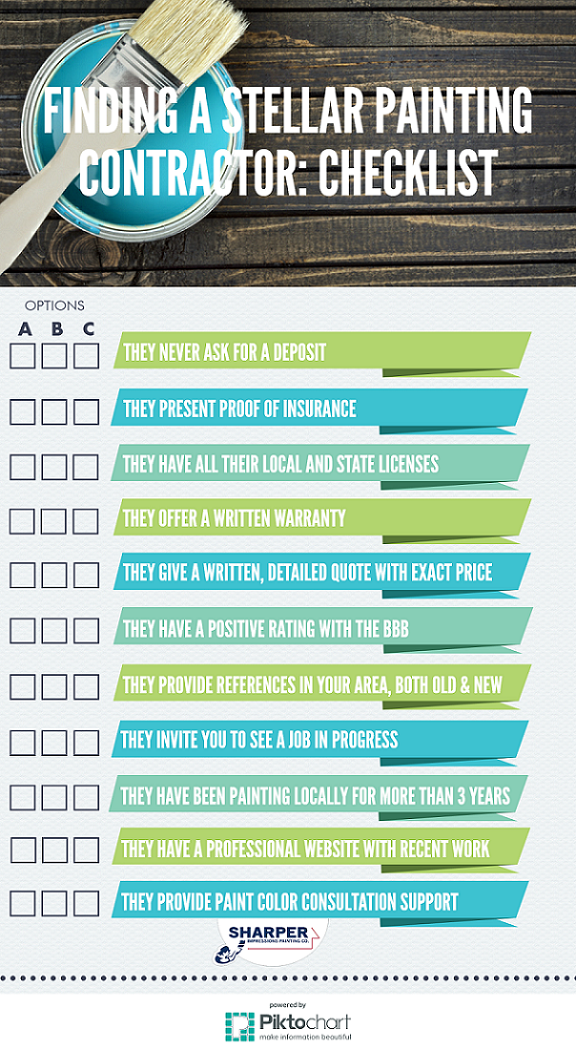Find Out How Seasonal Factors Influence Business Exterior Painting Success And Find The Very Best Times To Guarantee Lasting Results For Your Job
Find Out How Seasonal Factors Influence Business Exterior Painting Success And Find The Very Best Times To Guarantee Lasting Results For Your Job
Blog Article
Content Writer-Doherty Skafte
When you're planning a commercial exterior paint job, seasonal factors can make or damage your outcomes. You'll intend to consider exactly how temperature and moisture influence paint application and drying times. Selecting the best period can guarantee your paint adheres correctly and lasts much longer. Yet which periods are absolutely the very best for this sort of job? Allow's explore the key elements that can affect your project's success.
The Influence of Temperature on Paint Application
When you're planning an industrial external paint project, the temperature can dramatically affect exactly how well the paint sticks and dries out.
Ideally, you intend to paint when temperature levels range between 50 ° F and 85 ° F. If it's too chilly, the paint may not cure correctly, resulting in issues like peeling off or breaking.
On the other hand, if it's also warm, the paint can dry out as well promptly, avoiding appropriate attachment and leading to an uneven coating.
You should also take into consideration the time of day; morning or late afternoon supplies cooler temperatures, which can be extra positive.
Constantly inspect the manufacturer's referrals for the specific paint you're using, as they commonly give assistance on the excellent temperature variety for optimum outcomes.
Moisture and Its Impact on Drying Times
Temperature isn't the only environmental element that affects your commercial outside painting job; moisture plays a substantial duty also. High moisture degrees can reduce drying times dramatically, impacting the overall high quality of your paint work.
When the air is filled with wetness, the paint takes longer to heal, which can lead to concerns like poor attachment and a higher danger of mold growth. If you're repainting on a particularly moist day, be planned for extended delay times between coats.
https://www.bhg.com.au/12-tips-painting-house to monitor regional weather conditions and plan as necessary. Ideally, go for moisture levels between 40% and 70% for optimal drying out.
Keeping visit the next page in mind guarantees your job stays on track and delivers a lasting surface.
Best Seasons for Commercial Outside Paint Projects
What's the best season for your industrial external paint projects?
Spring and early loss are generally your best choices. During these seasons, temperature levels are light, and moisture levels are commonly reduced, producing excellent conditions for paint application and drying out.
Stay clear of summer season's intense heat, which can trigger paint to completely dry as well rapidly, leading to inadequate attachment and coating. In a similar way, winter season's cold temperatures can prevent proper drying and healing, taking the chance of the long life of your paint task.
Aim for days with temperatures in between 50 ° F and 85 ° F for optimal outcomes. Remember to examine the regional weather prediction for rainfall, as wet problems can destroy your project.
Planning around these factors guarantees your paint task runs efficiently and lasts longer.
Final thought
To conclude, preparing your industrial external painting projects around seasonal factors to consider can make a substantial difference in the result. By scheduling job throughout the optimal temperature levels and moisture degrees, you'll make certain much better attachment and drying times. Bear in mind to keep an eye on regional weather forecasts and select the correct time of year-- spring and very early fall are your best bets. Taking these steps will aid you attain a sturdy and specialist coating that lasts.
